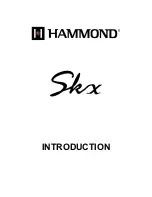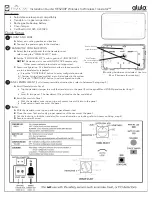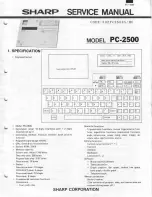
FXAlg #14: Grand Plate
Algorithm Reference-28
The algorithm developed for Grand Plate was carefully crafted for rapid diffusion, low coloration, freedom from
discrete early reflections, and ÒbrightnessÓ. We also added some controls that were never present in real plates: size,
predelay of up to 500ms, LF damping, lowpass roll off, and bass roll off. Furthermore, we allow a wider range of
decay time adjustment than a conventional plate. Once the algorithm was complete, we tuned it by listening to the
original EMT reverb on one channel and the Grand Plate emulation on the other. A lengthy and careful tuning of
Grand Plate (tuning at the micro detail level of each delay and gain in the algorithm) was carried out until the stereo
spread of this reverb was matched in all the time periodsÑearly, middle, and late.
The heart of this reverb is the plate simulation network, with its two inputs and two outputs. It is a full stereo
reverberation network, which means that the left and right inputs get slightly different treatment in the
reverberator. This yields a richer, more natural stereo image from stereo sources. If you have a mono source, assign
it to both inputs for best results.
The incoming left source is passed through predelay, lowpass (Lowpass), and bass-shelf (Bass Gain) blocks. The
right source is treated similarly.
There are lowpass filters (HF Damping) and high pass filters (LF Damping) embedded in the plate simulation
network to modify the decay times. The reverb network also accommodates the Room Size and Decay Time
controls.
An output mixer assembles dry and wet signals.
Parameters:
PAGE 1
PAGE 2
Wet/Dry
The amount of the stereo reverberator (wet) signal relative to the original input (dry)
signal sent to the output. The dry signal is not affected by the Lowpass or Bass Gain
controls. The wet signal is affected by the Lowpass and Bass Gain controls and by all the
other reverberator controls. The balance between wet and dry signals is an extremely
important factor in achieving a good mix. Emphasizing the wet signal gives the effect of
more reverberation and of greater distance from the source.
Out Gain
The overall output level for the reverberation effect and controls the level for both the
wet and dry signal paths.
Room Size
Choosing an appropriate room size is very important in getting a good reverberation
effect. For impulsive sources, such as percussion instruments or plucked strings,
increase the size setting until discrete reßections become audible, and then back it off
slightly. For slower, softer music, use the largest size possible. At lower settings, Room
Size leads to coloration, especially if the Decay Time is set too high. To emulate a plate
reverb, this control is typically set to 1.9m.
Pre Dly
Introducing predelay creates a gap of silence that allows the dry signal to stand out with
greater clarity and intelligibility against the reverberant background. This is especially
helpful with vocals or classical music.
Wet/Dry
0 to 100%wet
Out Gain
Off, -79.0 to 24.0 dB
Room Size
1.00 to 4.00 m
Pre Dly
0 to 500 ms
Decay Time
0.2 to 5.0 s
HF Damping
16 to 25088 Hz
LF Damping
1 to 294 Hz
Lowpass
16 to 25088 Hz
Bass Gain
-15 to 0 dB
















































